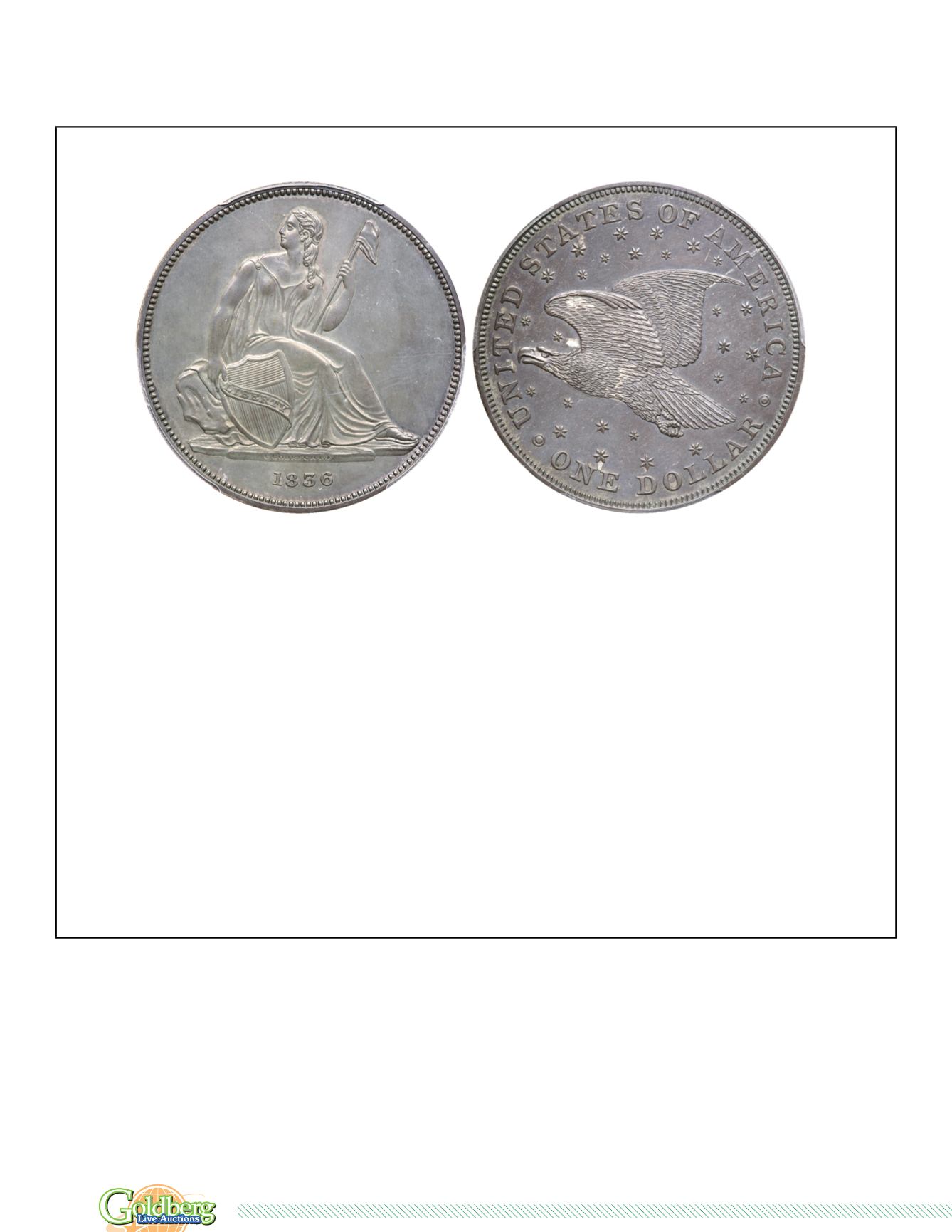
226
|
Patterns
P
ATTERNS
P
OPULAR
1836 P
ATTERN
D
OLLAR
Enlargement
1620
1836 Pattern Dollar. Silver, Plain Edge. Judd-60. Pollock-65 Rarity 1
.
PCGS graded Proof 61
. Nice even toning on both sides. A
splendid specimen, as graded, of this, one of the most important of all American silver coins of any denomination. Both obverse and reverse
are toned light smoky gray, nicely blended, yielding a treat to the eye. The reverse die is in normal coin alignment, 180° opposite the obverse
die, with the eagle flying "onward and upward," a phrase from early Mint correspondence.
Just 1,000 of these pieces were minted in December, 1836, all with Proof finish. Some of them were presented here and there, including two
to President Andrew Jackson, others to Treasury officials, and a few to numismatic cabinets. Afterwards, many hundreds were simply put into
circulation for face value. This is the first (but not only) instance in which a coin made from polished dies, deliberately with Proof finish,
proved to be a circulating issue. For many years the variety was considered to be a pattern, designated as J-60, but some consider this to be
misdirected. Current thinking is the pieces were regular issue, not patterns or experimental in any way.
The genesis of the Gobrecht dollar began in 1835 when Christian Gobrecht was hired at the Philadelphia Mint, to help Chief Engraver William
Kneass, who in August had suffered a debilitating stroke. Gobrecht, whose credentials far exceeded those of Kneass, and who was one of the
best known engravers in the United States (having done extensive work on illustrated books, for medals including for the mint, and on bank
notes), did not want to be called assistant engraver, and was hired as a second engraver, in his mind this meaning "another engraver," not
someone subsidiary in rank. In any event, from that point onward Gobrecht created nearly all of the new die work turned out.
In its final form the Gobrecht silver dollar appeared as here, with a Liberty Seated figure in cameo on the obverse, name inconspicuously on
the base, and with the eagle flying onward and upward on the reverse, amid a galaxy of 26 stars, 13 large and 13 small. At the time there
were 35 states in the Union, but it was not long until Michigan became the 26th (in 1837).
In early 1837 additional Gobrecht dollars from these dies were struck, of a different standard under the authority of January 18, 1837, and
differentiated from the originals by having the dies aligned differently. Still later, restrikes were made at the mint, probably through the early
1870s.
Pop 22; 69 finer, 33 in 62, 1 in 62+, 22 in 63, 13 in 64
. (
PCGS # 11225
)
Estimated Value ........................................................................................................................................................... $20,000 - 21,000


